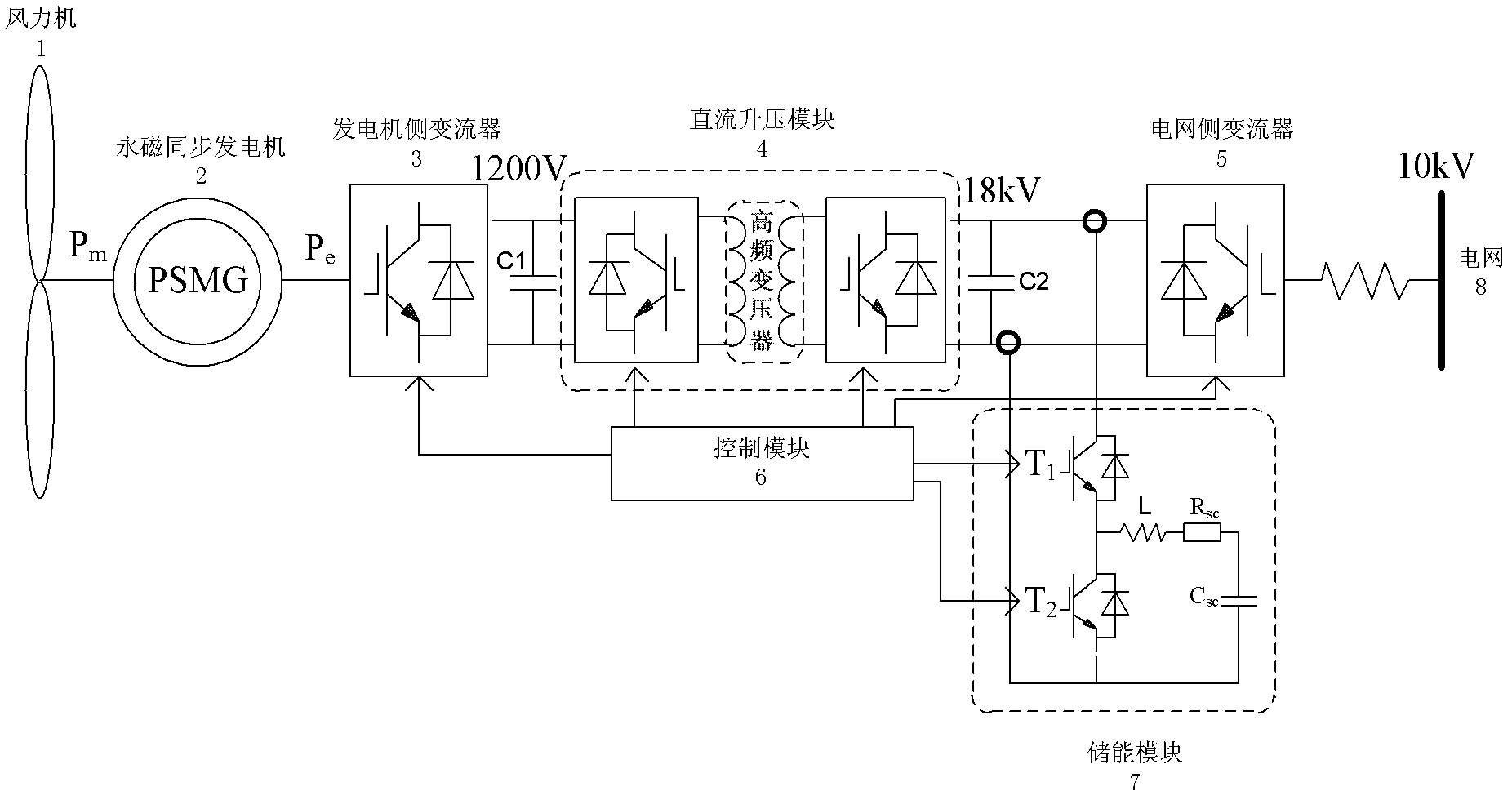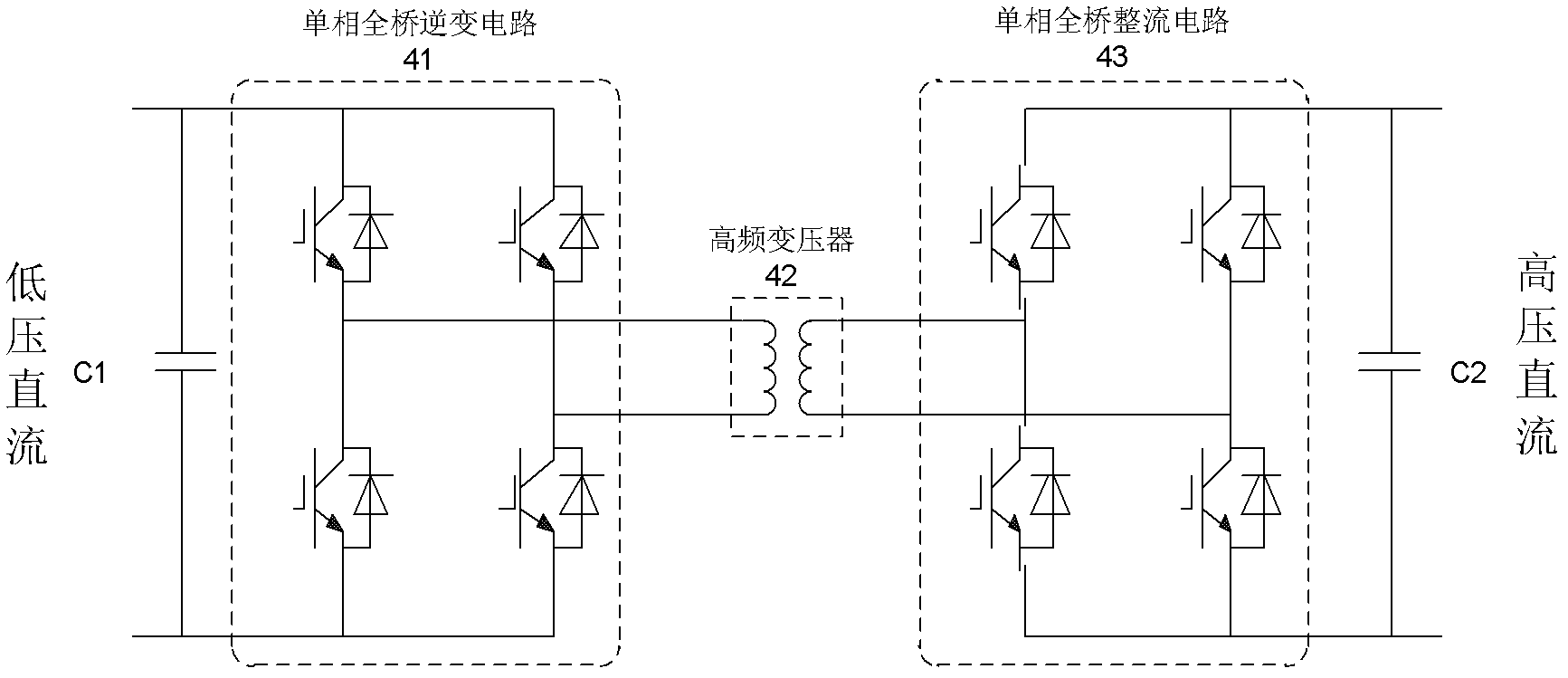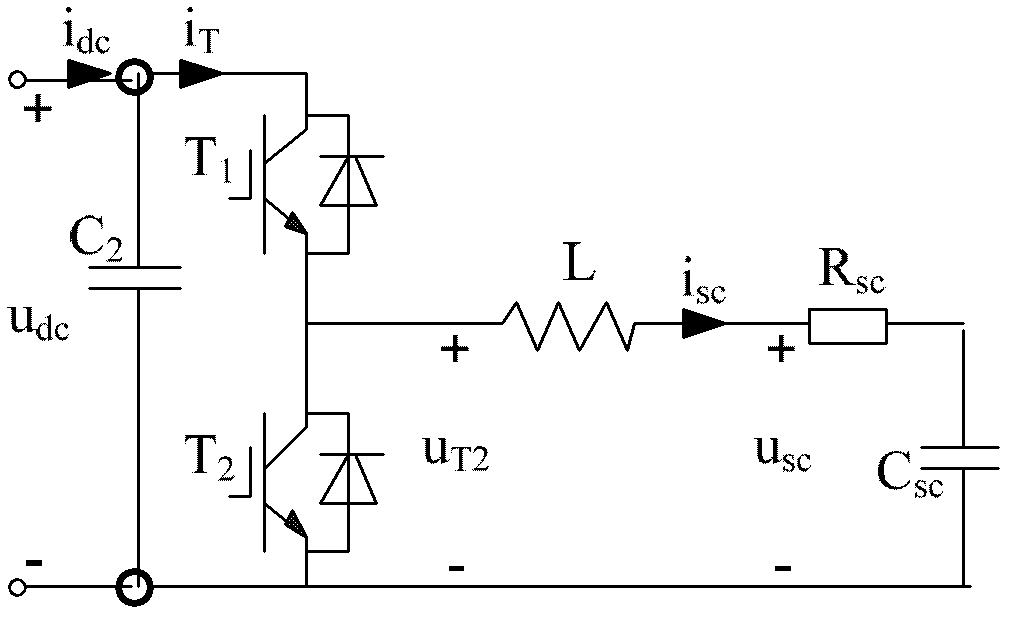Grid connecting system of permanent magnet synchronous wind driven generator
A wind turbine, permanent magnet synchronous technology, applied in wind power generation, control/regulation systems, electrical components, etc., can solve problems such as low grid-connected voltage, reduce heat loss, and enhance low-voltage operation capabilities.
- Summary
- Abstract
- Description
- Claims
- Application Information
AI Technical Summary
Problems solved by technology
Method used
Image
Examples
Embodiment
[0025] Such as figure 1 As shown, a permanent magnet synchronous wind generator grid-connected system includes a wind turbine 1, a permanent magnet synchronous generator 2, a generator-side converter 3, a DC boost module 4, a grid-side converter 5, and a control module 6 and energy storage module 7. The wind turbine 1, the permanent magnet synchronous motor 2, the generator-side converter 3, the DC boost module 4 and the grid-side converter 5 are sequentially connected to the power grid 8, and the generator-side converter 3 and the DC boost module 4 is connected in parallel with a first capacitor C1, a second capacitor C2 is connected in parallel between the DC boost module 4 and the grid-side converter 5, and the energy storage module 7 is connected in parallel between the second capacitor C2 and the grid-side converter 5 , the control module 6 is respectively connected with the generator-side converter 3 , the DC step-up module 4 , the grid-side converter 5 and the energy s...
PUM
 Login to View More
Login to View More Abstract
Description
Claims
Application Information
 Login to View More
Login to View More - R&D
- Intellectual Property
- Life Sciences
- Materials
- Tech Scout
- Unparalleled Data Quality
- Higher Quality Content
- 60% Fewer Hallucinations
Browse by: Latest US Patents, China's latest patents, Technical Efficacy Thesaurus, Application Domain, Technology Topic, Popular Technical Reports.
© 2025 PatSnap. All rights reserved.Legal|Privacy policy|Modern Slavery Act Transparency Statement|Sitemap|About US| Contact US: help@patsnap.com



